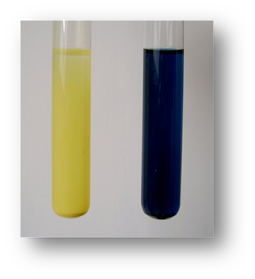Digital Text
CARBOHYDRATE
Objectives:
o Students understand about the need of food in our daily life.
o Students analyze the structure of carbohydrates.
o Students understand the importance of carbohydrate in diet.
o Pupil identifies carbohydrate rich food.
Structure of carbohydrate
The hydrates
of carbon is known as carbohydrates. Carbohydrates are large macromolecules
made up of carbon (C), hydrogen (H) and oxygen (O). Carbohydrates have the
general formula CX(H2O)Y.
Functions of
carbohydrate
Carbohydrates
are an essential part of our diet. Most importantly, they provide the energy
for the most obvious functions of our body, such as moving or thinking, but
also for the ‘background’ functions that most of the time we do not even
notice.
Ø Providing energy for physical and physiological activities.
Ø Regulating blood glucose level.
Ø Major source of dietary fibers.
Ø Add flavor to diet.
Major sources
of carbohydrate
Carbohydrates are found in a wide array of both healthy and unhealthy foods. Cereal and tubers are the most common forms of carbohydrates. Bread, beans, milk, popcorn, potatoes, carrots, rice, wheat, beetroot, cookies, spaghetti, soft drinks, corn, etc. are some examples. They also come in a variety of forms. The other abundant forms are sugars, fibers, and starches. Foods high in carbohydrates are an important part of a healthy diet.
The healthiest sources of carbohydrates are unprocessed or minimally processed whole grains, vegetables, fruits and beans and they promote good health by delivering vitamins, minerals, fiber, and a host of important phytonutrients.
The unhealthier sources of carbohydrates include white bread, pastries, sodas, and other highly processed or refined foods. These items contain easily digested carbohydrates that may contribute to weight gain, interfere with weight loss, and promote diabetes and heart disease.
Detection of
carbohydrate in food
Iodine test is
a chemical reaction that is used to detect the presence of carbohydrate.
Iodine test
Materials
required: Test tube, rice gruel, iodine solution, and
dropper.
Procedure: Take small amount of rice gruel in a
test tube. Add two drops of iodine solution to it.
Observation: The color of the iodine in rice gruel
is changes from brown to dark blue.
Inference: The rice gruel contain carbohydrate.
References
·
https://www.sparknotes.com/health/carbohydrates/section2
·
https://www.eufic.org/en/whats-in-food/article/the-basics-carbohydrates


.jpg)
Comments
Post a Comment